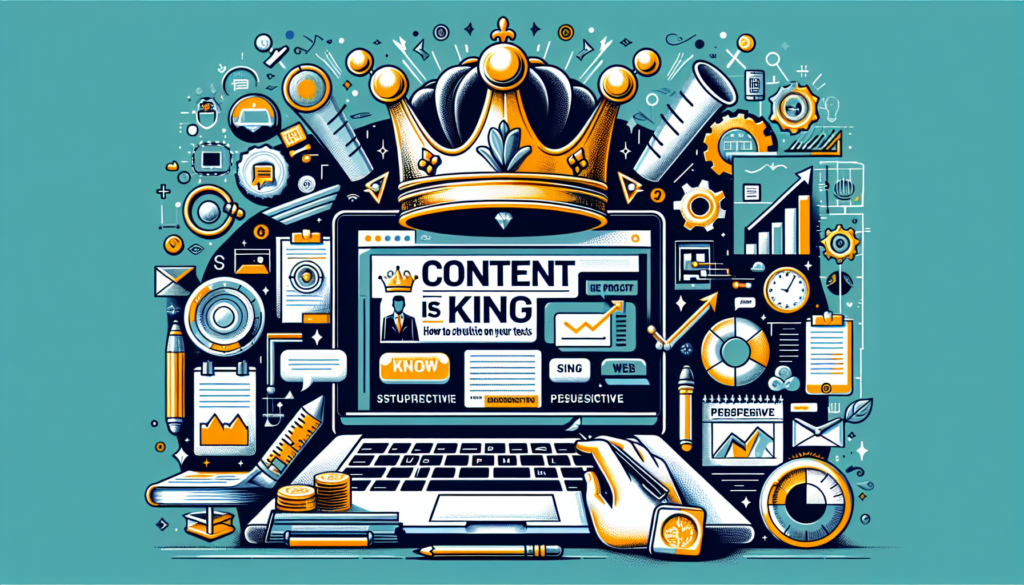In the digital age, the textual content of a web page stands as a central tool not only for the transmission of information but as a strategic pillar for persuasion and user engagement. Crafting compelling texts is an art that technically combines psychology, marketing, and literature, focusing simultaneously on the clarity of the message, the language’s aesthetics, and the usability of the information. This article delves into the theoretical grounding and cutting-edge techniques for creating highly persuasive web content, structuring each textual fragment to capture attention and encourage a desired action from the target audience.
Psychological Foundations of Persuasion
Cialdini’s Principles: The psychology of persuasion has been extensively studied, and Robert Cialdini’s six principles of influence have become benchmark points: reciprocity, commitment and consistency, social proof, authority, liking, and scarcity. Textual implementation of these principles in creating web content can significantly increase its effectiveness.
Practical Application: A case study analyzing the influence of customer testimonials on a landing page evidences the power of social proof. The inclusion of positive quotes from existing users increased the conversion rate by a notable 34%, according to a report by MarketingExperiments.
SEO and Content Optimization
Keyword Research: Thorough keyword research ensures visibility in search engines, aligning web content with user queries.
SEO Structuring: Keyword density is kept subordinate to the natural flow of language to avoid over-optimizing. Subheadings (H2, H3) are structured to facilitate search engine indexing and user experience navigation.
The Importance of Structure and Design
Readability: Factors like font size, line length, and spacing directly affect how text is processed by the user. A study conducted by the Massachusetts Institute of Technology (MIT) emphasizes that readability is crucial for maintaining user attention.
Microcopy: Microcopy, or micro-text, refers to those brief but high-impact text fragments. They are used to guide and reassure the user in their web navigation, proving particularly effective in forms, calls to action (CTAs), and error messages.
Narrative and Storytelling
Emotion and Connection: Stories and narratives build emotional universes that attract and retain user attention far more efficiently than the mere presentation of data.
Revealing Example: Coca-Cola’s “Share a Coke” campaign, personalizing labels with common names, generated content that transcended the promotional to connect with the consumers’ personal stories.
Psychology of Color and Typography
Color Influence: Color is not just an aesthetic aspect but also a psychological element that can affect emotions and behaviors. For example, blue is frequently associated with trust and tranquility, which can favor the credibility of a financial website.
Typography with Character: Studies indicate that style and font choice influence perceptions of seriousness and professionalism in content. The harmonious combination of fonts contributes additionally to the visual hierarchy of text.
Interaction and Engagement
Call To Action (CTA): CTAs are critical elements that guide users toward conversion. Their design and copywriting should be clear and stimulating, prompting an immediate response.
Success Case: Dropbox experienced substantial growth in its user base by implementing a simple and direct CTA that invited users to try the service for free.
Measurement and Analysis
Web Analytics: Tools like Google Analytics offer a detailed perspective on how users interact with web content, allowing for continual optimization of the content strategy.
Continual Adaptability: Evaluating content performance through metrics like time on page and bounce rate facilitates rapid iterations and improvements in the strategy.
Conclusion
Content is unequivocally the king of any web strategy. However, its mere presence is not enough: it must be created, structured, and revised with a technical, psychological, and aesthetic approach. Professionals who master this persuasive triad will be in a favorable position to create web texts that not only inform but also inspire, influence, and convert. The key is in continuous adaptation and learning to keep up with trends in user behavior and technology, ensuring the content remains relevant and powerful in an ever-evolving digital landscape.

